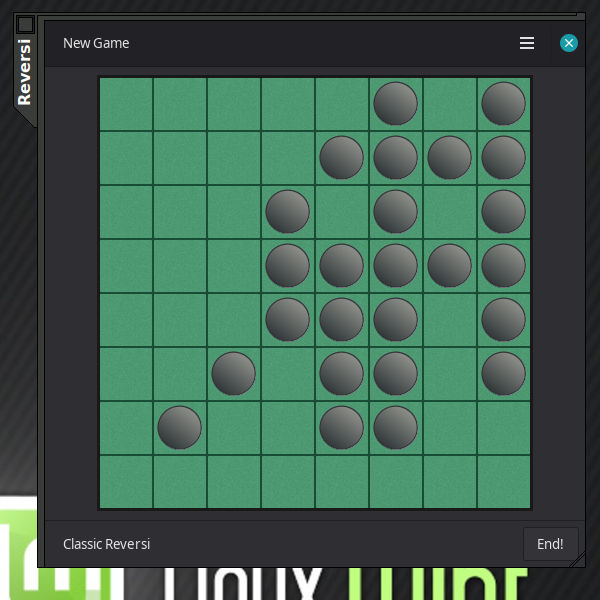I don’t know when I discovered the WMX window manager. Probably about the time I discovered CTWM, when I was exploring the weird, old avenues that Linux had once traveled down. I was struck immediately by how different it looked.
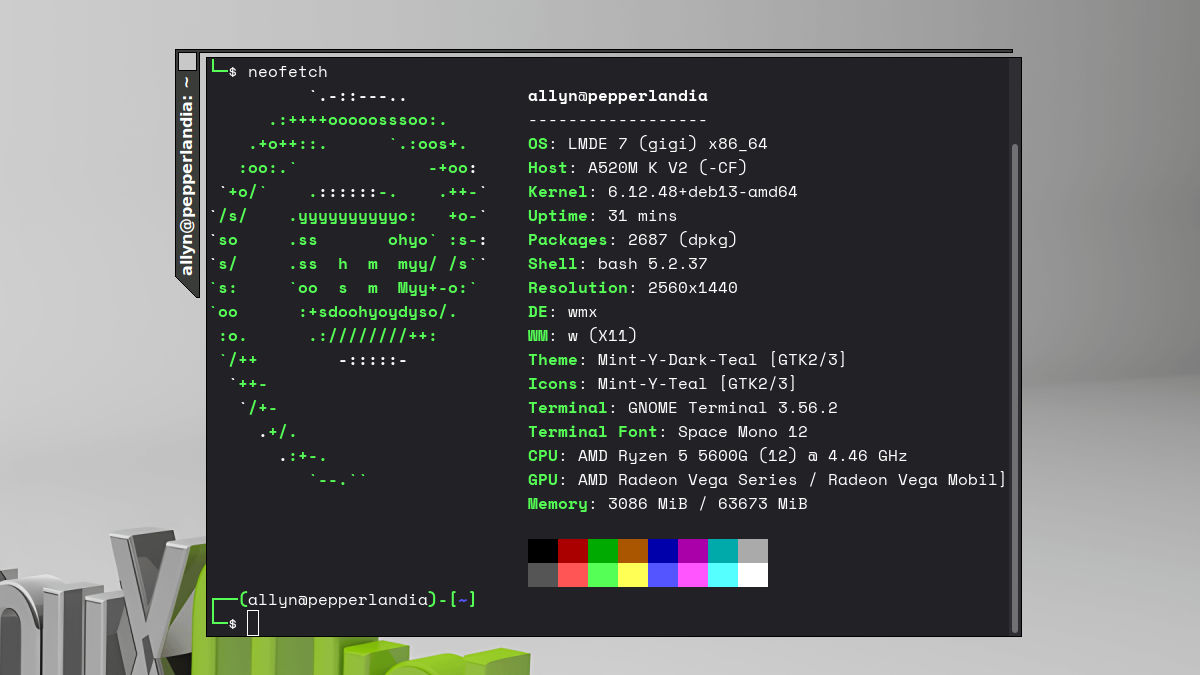
Instead of the title at the top of the window, it runs down the side!
There are no buttons to close, maximize, or minimize!
When the window isn’t active, the frame detaches from the window!
No icons! No wallpaper! No system tray or application panel!
It was stark, unique, and extremely minimalist. Just two menus — one to launch a terminal window or switch between windows, one to launch programs. And all the usual functions one would expect — moving windows around the screen, resizing windows, minimizing windows (which makes them disappear, and they can be returned with that first menu).
I downloaded the source code, compiled it on Linux Mint Debian Edition 6, and I would occasionally pull it out and play with it. I installed feh to add a wallpaper and tint2, which can be used for a system tray, to have program launchers. As distraction-free as CTWM is, WMX was even more so, and I would sometimes use it for Diamond work…
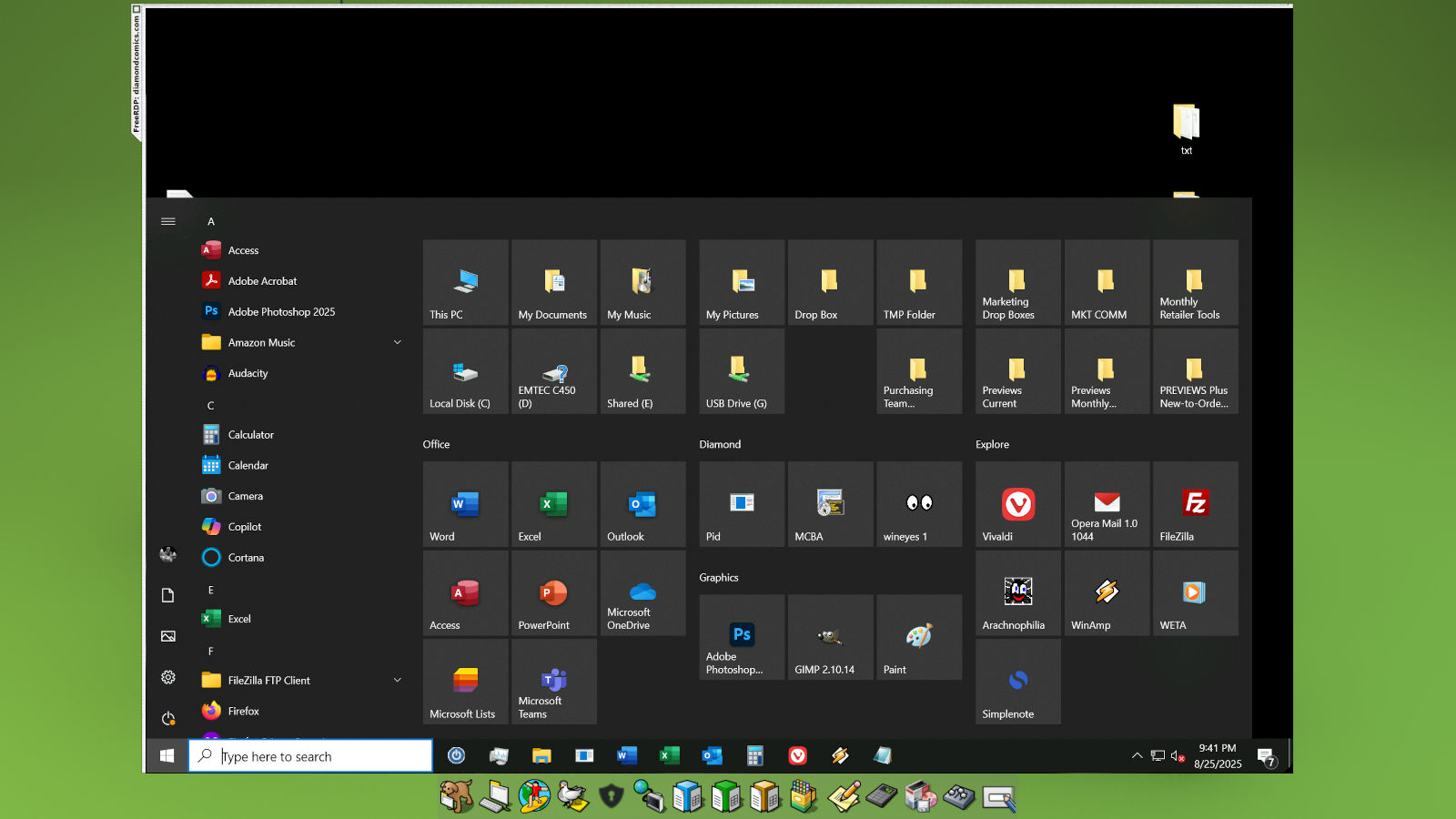
…or just play backgammon.
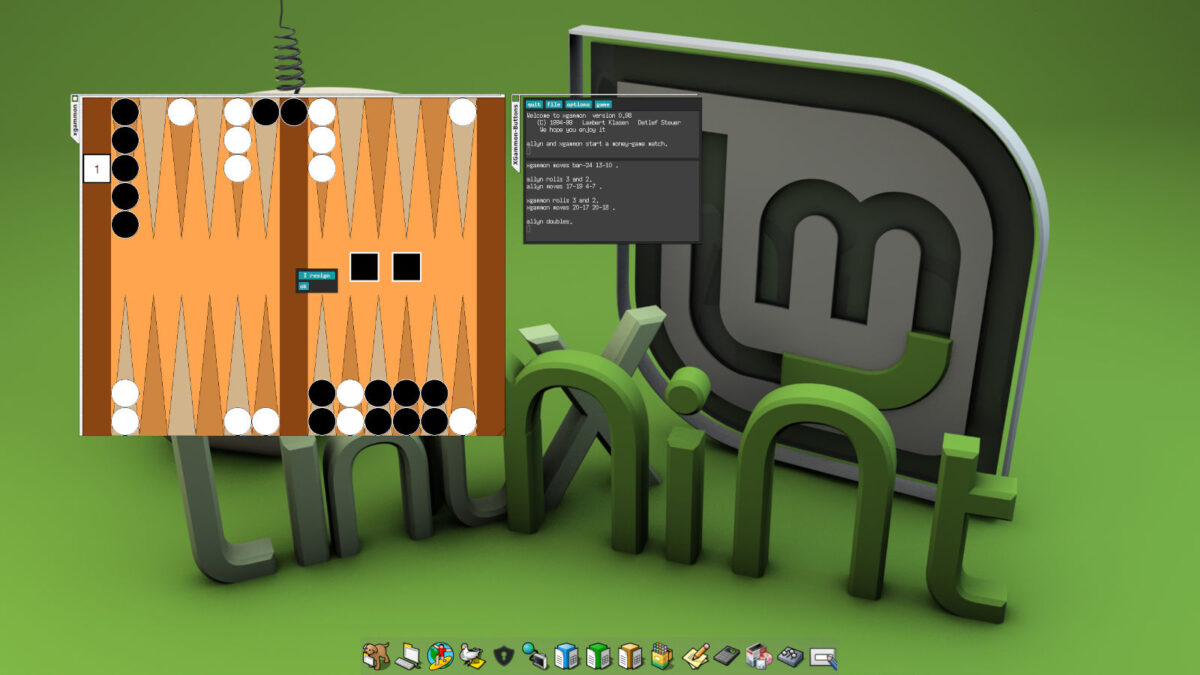
One thing you may notice is that the frames on these windows are sort of off-white, and there’s some texture to them, while the terminal window I showed up top, with the detached frame, is dark and matches the Linux Mint color scheme. Was there a configuration file that accomplished this? A .wmxrc in my home directory?
No, absolutely not. WMX has no configuration files of any kind. I wanted a dark frame? I had to edit the C source code, create a new background graphic, and recompile. Some experimentation was involved, and this webpage proved helpful on changing up the frame background. I compiled a version with a dark and textured frame, and I didn’t really care for that. The flatter look fits the Mint aesthetic better, imho.
I tried out a Conky configuration with WMX. Yes, it’s nice, especially since there’s no clock on the screen or any indication of network status. But I’m not sure about it.
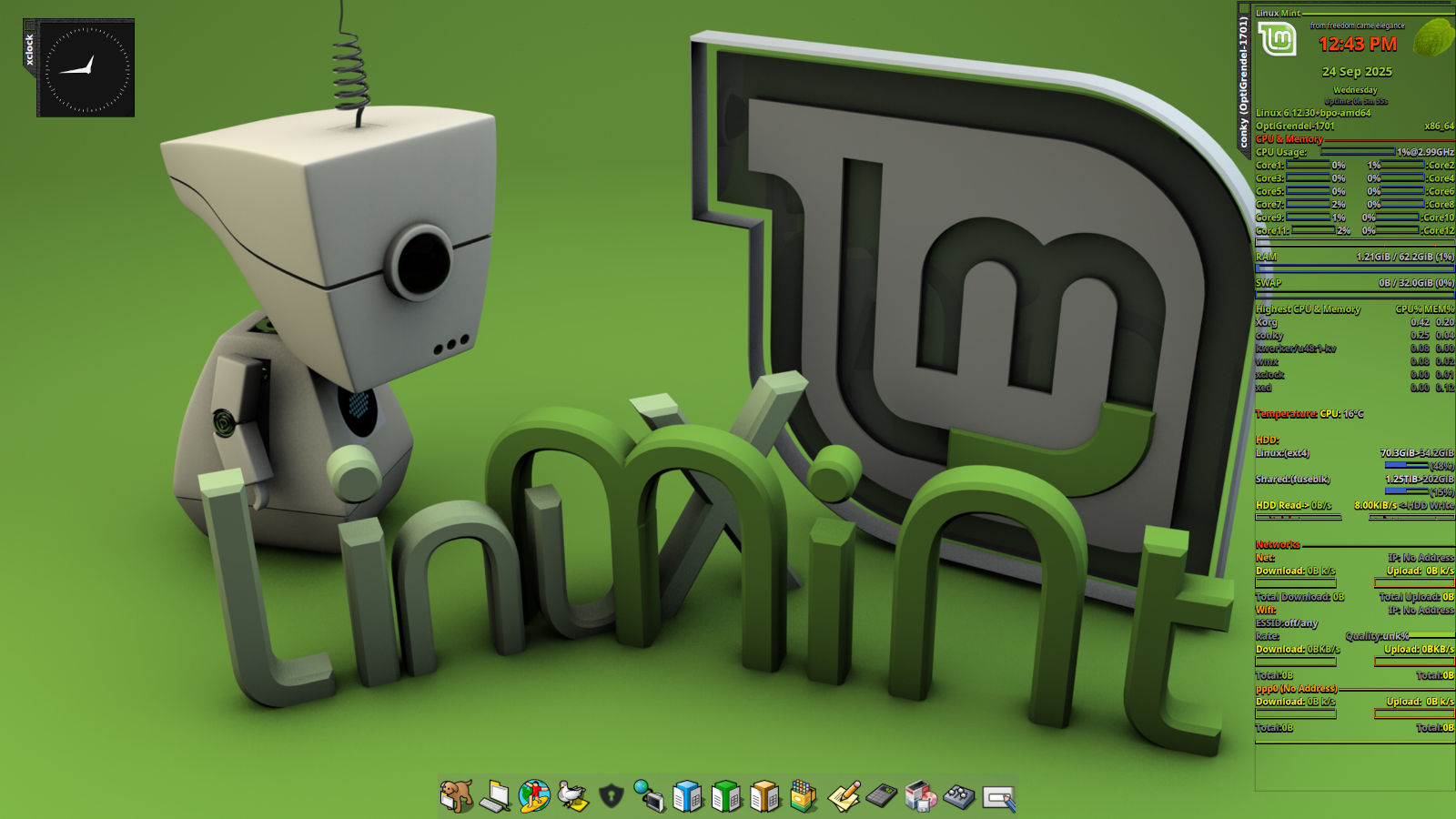
I didn’t recompile WMX for LMDE7. It’s just one file, the executable, so I copied it over from the LMDE6 drive to the LMDE7 drive, copied over the files that launched it, and tested whether it worked.
It did.
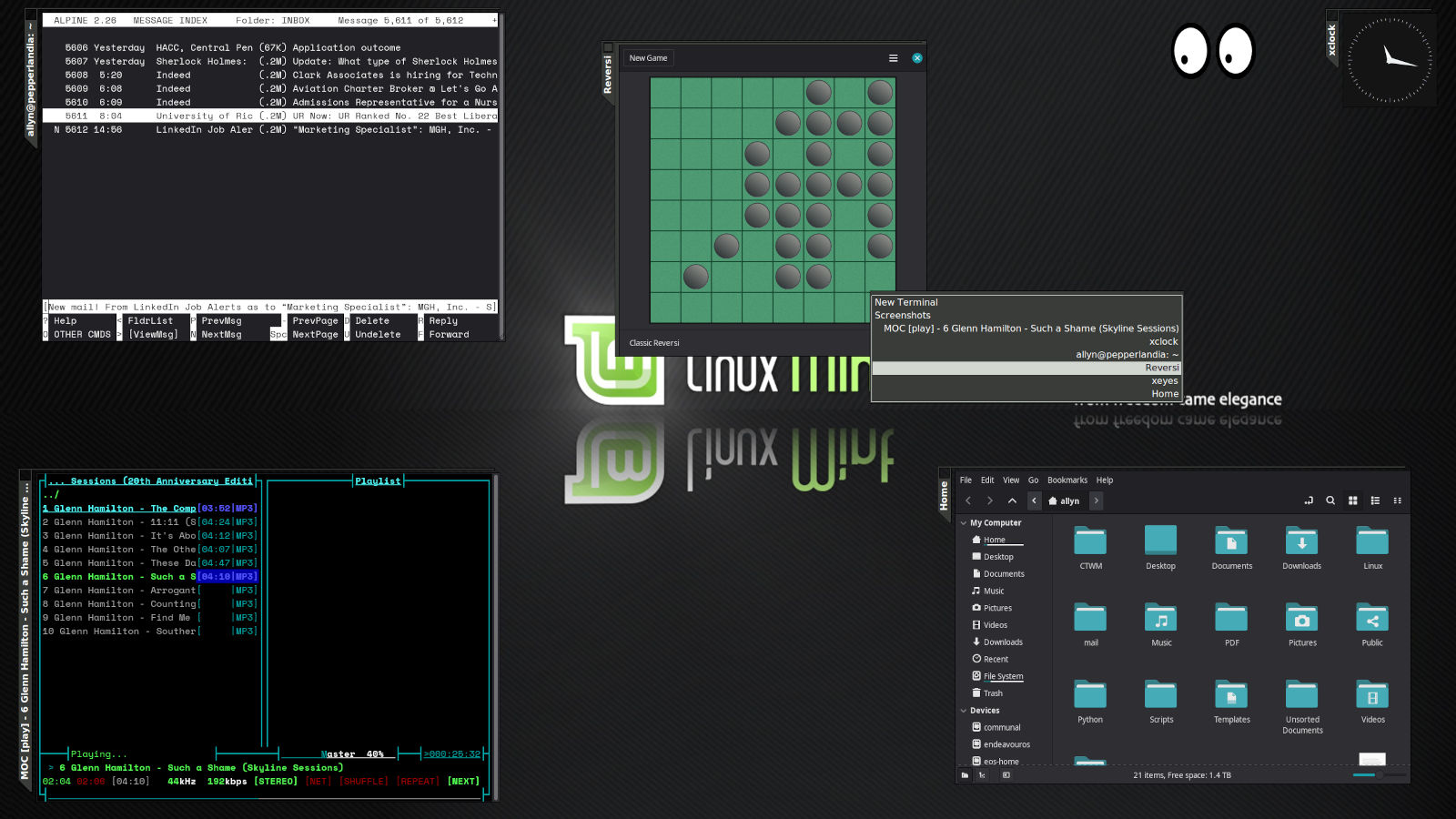
No Conky. No launchers with Tint2. Just the menus, like the open that opens a terminal or switches between windows…
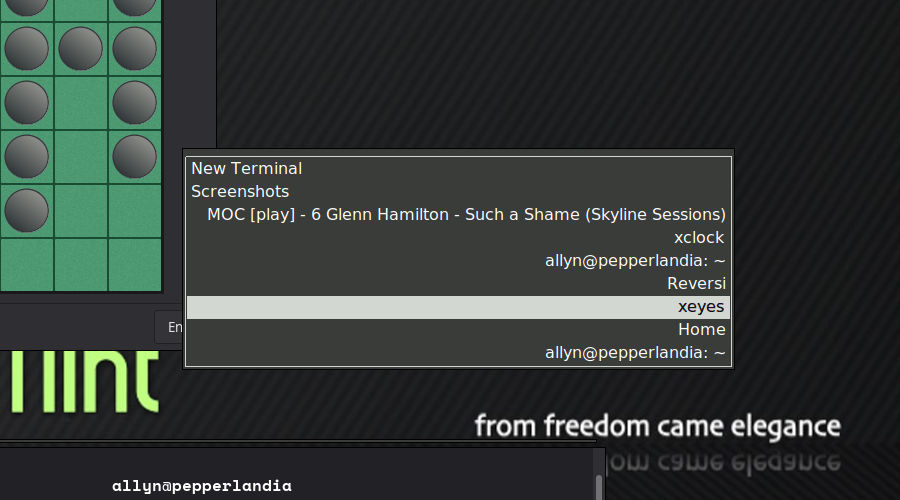
…or the one, launched with the mouse wheel, that can launch a program.
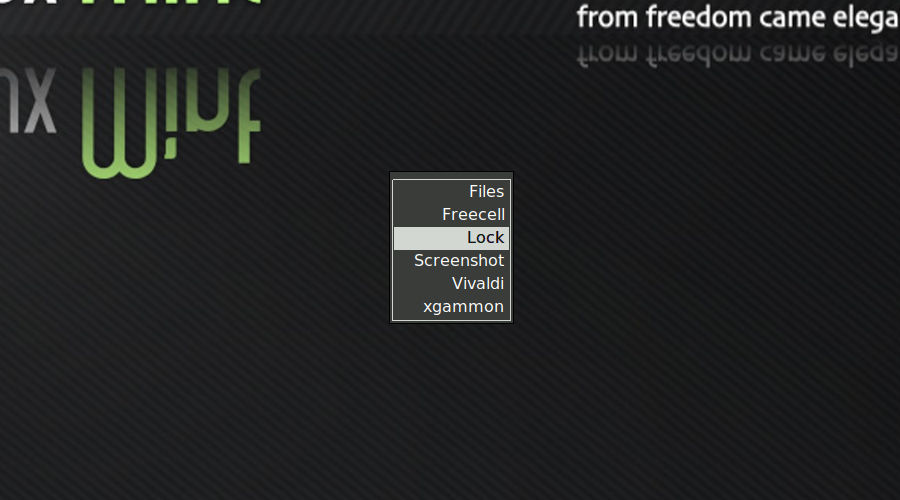
If I wanted to make WMX useful, I suppose I would install Rofi, then create an entry for the program launcher menu that launches Rofi, which is used to list and launch programs. I use it on EndeavourOS.
There are some cool behaviors. Use the right mouse button to switch between open programs, not unlike the Windows alt-tab behavior. Hover over a window, and use the mouse wheel to move the program to a new workspace up or down.
There are a couple of keyboard shortcuts, but nothing really worth writing home about.
I’ll keep it around. It’s lightweight (I had a browser open on another workspace in the screenshot at top, hence the memory usage), stylish, and unique. When I want retro brutalism mixed with minimalism, I can go with CTWM. And when I want style with my minimalism, I can fire up WMX.
It’s good to have options, especially if all I need to do is fire up a text editor and write.
And year, that game of Othello was very bit as decisive as it appears.
